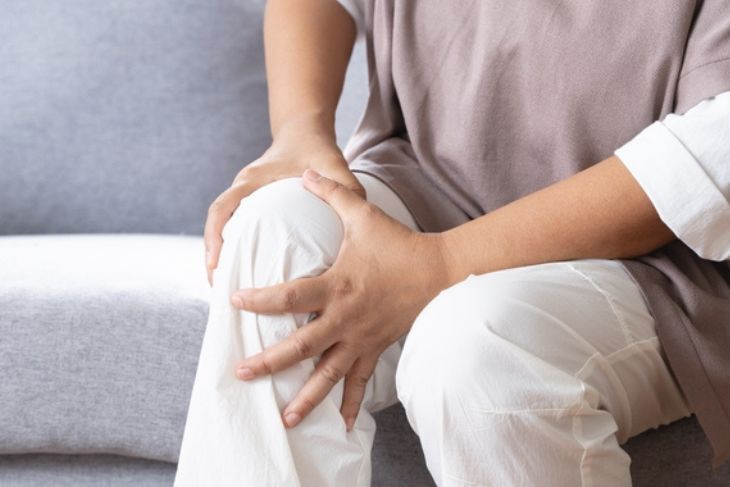Managing joint pain and arthritis with weight loss

Arthritis is an umbrella term for a medical condition that affects the joints between your bones. The condition is common, with one in seven Australians having some form of it. The most prevalent type of arthritis in Australia is osteoarthritis (OA).
Arthritis can be a highly painful and debilitating condition; one in two Australians with the condition report experiencing moderate to severe pain. Its symptoms include joint stiffness, swelling, reduced mobility and redness in the affected joints.
OA, which affects one in 11 Australians, is a chronic condition caused by the depletion of protective cartilage in the joints. This causes the bones to rub together resulting in its painful symptoms. osteoarthritis largely affects the hands, spine, hips, knees and ankles.
The risk factors for OA include genetics, age (incidences rise from the age of 45) and sex (women are more likely to be affected than men). While these factors can’t be controlled, there are lifestyle factors that can be modified to reduce your likelihood of developing arthritis, or managing symptoms if you have it. These include managing your weight, being physically active, stopping smoking and minimising alcohol intake.
Arthritis and weight loss
Obesity is a major risk factor for OA. According to the Royal Australian College of General Practitioners (RACGP), rising levels of obesity in Australia will also result in a rising number of OA cases.
The reason why excess weight is such a major risk factor, and why it can worsen symptoms of OA, is because it places extra pressure on your joints and increases the stress on your cartilage – especially in your knees. “Every kilogram of excess weight you carry,” says Professor David Hunter, an arthritis expert at the University of Sydney, “puts an extra load of four kilograms on your knee joint.”
Looking for weight loss motivation, dinner inspiration or exercise ideas? Check out the CSIRO Total Wellbeing Diet blog.
How diet & weight loss help arthritis
While there’s no cure for arthritis, weight management and physical activity are two ways to manage the condition and reduce the severity of symptoms. If you’re overweight or obese, weight loss can reduce knee pain and joint pain by reducing pressure on the joints which can result in increased mobility.
Research suggests that a weight loss of five percent of your body weight can offer significant health benefits, including managing symptoms of arthritis. Additional weight loss offers further benefits to symptoms; research has shown that CSIRO Total Wellbeing Diet members who lost the highest amount of body fat during the program experienced the greatest improvements in pre-existing health conditions.
Two in three CSIRO Total Wellbeing Diet members surveyed also reported having more energy after participating in the program. Having more energy makes physical activity easier to achieve, and regular physical activity is strongly recommended for people with joint pain and osteoarthritis. Exercise strengthens your muscles and increases mobility and flexibility in your joints.
The CSIRO Total Wellbeing Diet for Joint Pain
The CSIRO Total Wellbeing Diet offers a weight loss plan specifically for joint pain and arthritis. The diet plan for joint pain is designed to help you eat better, lose weight, and manage joint pain for life.
Meet some CSIRO Total Wellbeing Diet members who lost weight and improved their joint pain:

Kerri lost 27 kg* and is now managing her health conditions
After being diagnosed with two forms of arthritis, as well as type 2 diabetes, Kerri knew she needed to lose weight to manage her health conditions. She lost 27 kg*, which meant she could get back into an exercise routine that helped her to manage her symptoms, as well as reducing pressure on her joints.
*in 45 weeks. Individual results may vary.
Janice lost 19.7 kg* and is moving better than ever
Despite her sedentary lifestyle, Janice experienced a foot fracture that refused to heal. “My foot just cracked under the pressure! My hips and knee joints were always sore and it was harder and harder to just stand up after sitting for a while.” After losing weight with the CSIRO Total Wellbeing Diet, Janice’s joints are no longer sore, she finds it easier to walk around, get up and down from sitting, and she feels “10 years younger and lighter!”
*in six months. Individual results may vary.


Jennifer lost 23 kg* and can now play with her grandkids
A back injury and daily aches and pains in her joints meant Jennifer wasn't able to play with her grandsons. With a fear those pains would turn into a chronic condition, she joined the CSIRO Total Wellbeing Diet and lost an impressive 23 kg. Now, pain-free, Jennifer is able to keep up with her grandkids and go on long walks and bike rides with her husband.
*in 12 months. Individual results may vary.
Are you trying to lose weight? Learn more about our health condition-specific weight loss programs.
